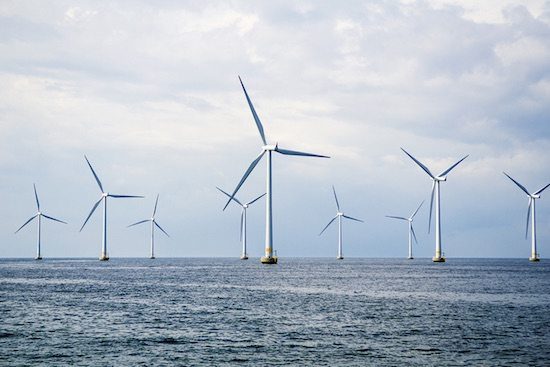America’s first commercial-scale offshore wind farm is expected to save electricity consumers in the state of Massachusetts around $1.4 billion over 20 years, by supplying power about 18 per cent cheaper than any alternative sources.
Bloomberg reports that the 800MW Vineyard Wind project – a yet-to-be-built joint effort of Avangrid and Copenhagen Infrastructure Partners – is expected to provide electricity and renewable energy credits for 6.5 cents a kilowatt-hour (8.5c/kWh AUD) over the life of its 20-year contract.
“This total price is materially below the levelized projected costs of buying the same amount of wholesale energy and RECs in the market, which is projected to be a total levelized price of 7.9 cents/KWh,” a letter from the state Department of Energy Resources said on Wednesday.
This was confirmed by the CEO of the project, Lars Thaaning Pedersen, who said in a statement that federal tax credits and a long-term power-purchase agreement had helped the wind farm “offer an attractive price” to consumers.
“At a total levelized price of 6.5c/kWh for energy and RECs, the Vineyard Wind offshore wind generation long-term contracts provide a highly cost-effective source of clean energy generation for Massachusetts customers,” the letter said.
“As shown in the EDCs’ filings,” the letter continues, “on average, these contracts are expected to reduce customers’ monthly bills, all else being equal, approximately 0.1 per cent to 1.5 per cent.”
According to Bloomberg, that makes the wind farm – off the coast of Martha’s Vineyard – about 18 per cent cheaper than other generation alternatives, and lower in cost than even the wind industry expected.
“That’s pretty shocking for us,” said Bloomberg NEF wind analyst Tom Harries. “I think the wider industry expected much higher prices.
“The general consensus was that it would take a while for new markets to reach levels we’ve seen in Europe and the U.S. seems to be doing this pretty fast,” he said.
“The repercussions of this are it will probably awaken a lot of other coastal states to the value of offshore wind.”
Offshore wind, while nowhere near as well established as its onshore cousin, has been slowly catching up, both on price and installations.
According to a 2018 report by the International Renewable Energy Agency, IRENA, auction results in 2016 and 2017, for offshore wind projects due to be commissioned in 2020 and beyond, signalled a step-change that would take costs down to between 6-10c/KWh (USD).
Last year, a UK renewables auction saw two developers win the rights to build offshore wind farms for around USD 7.5c/kWh; a price – as we reported here – that was 50 per cent below the guaranteed development price for offshore wind of just two years before, and well below the cost of nuclear in the UK.
As prices continue to fall, Bloomberg NEF has forecast installation growth of around 16 per cent a year, through 2030, driven by the UK, Germany, Netherlands and China.
Construction of the Vineyard Wind project is set to start in 2019, and to have the plant sending power to the Massachusetts grid by 2021.








